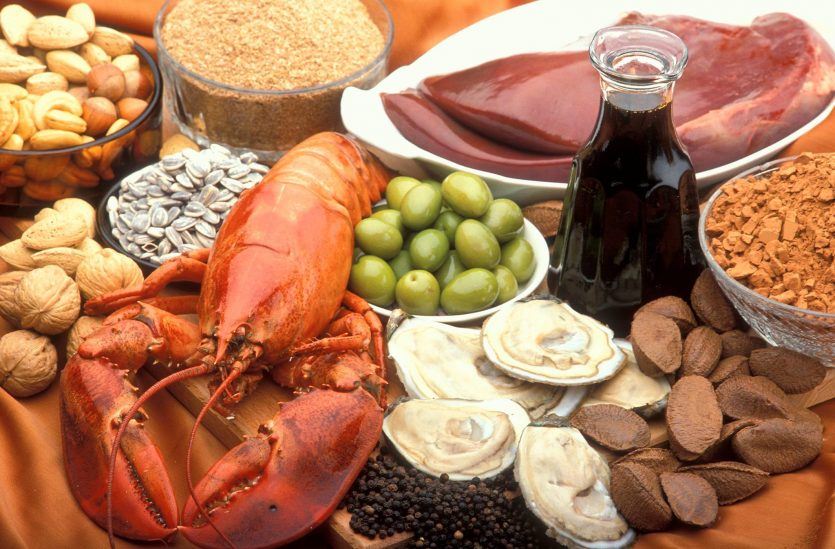Copper
Copper is an essential nutrient for all known plants and animals. Some animals use copper as part of their oxygen transport system, with hemocyanin (a copper-based protein) taking the place of hemoglobin (the iron-based protein humans and most vertebrates use). In these creatures, oxygenated blood is blue instead of red.
In humans, copper plays a key role in a number of essential metabolic reactions. Copper indirectly functions as an antioxidant through its essential role in the superoxide dismutase (SOD) class of enzymes. Other biological roles for copper include oxidizing ferrous iron to ferric iron (a reaction needed for hemoglobin synthesis), and the formation of lysyl oxidase, a copper-requiring enzyme with roles in collagen synthesis and wound healing.
Copper is also needed in reactions related to respiration and the release of energy. Recent research indicates a potential role for dietary copper in addressing heart disease, perhaps by undermining the composition and progression of atherosclerotic lesions.
Absorption of copper is relatively high in humans, with general bioavailbility between 55% and 75% except at very high intakes (where it can fall to less than 10%). The best food sources include oysters and shellfish, nuts, grains, and legumes, while the copper content of vegetables, fruits, and meats varies considerably.
Copper is relatively nontoxic to most mammals, including humans. An FAO/WHO Expert Committee specified intakes of 0.5mg per kg body weight as safe, or ~25mg per day for a typical adult.



